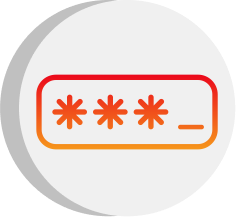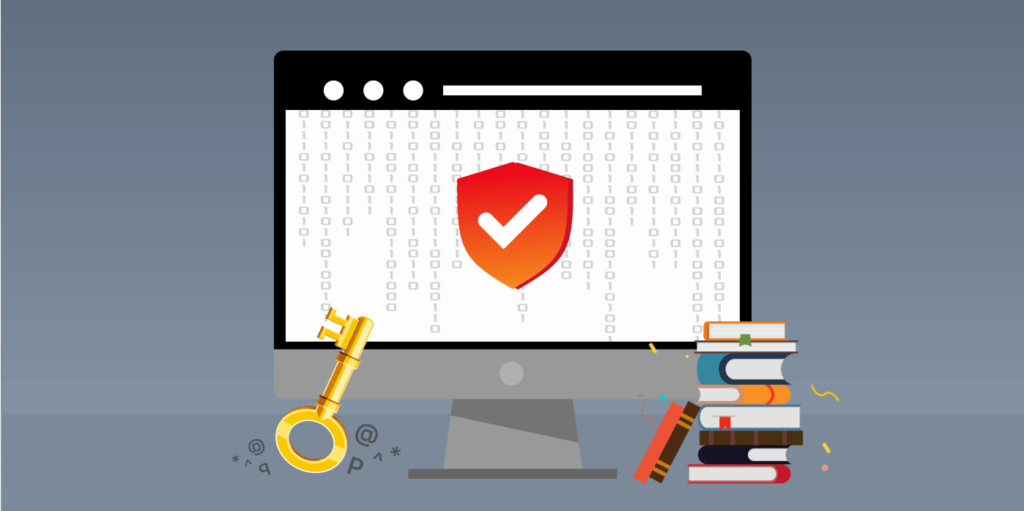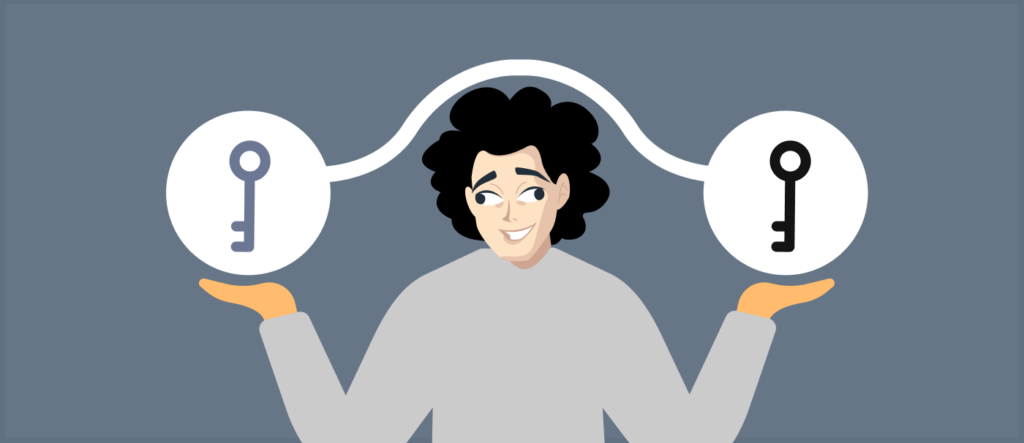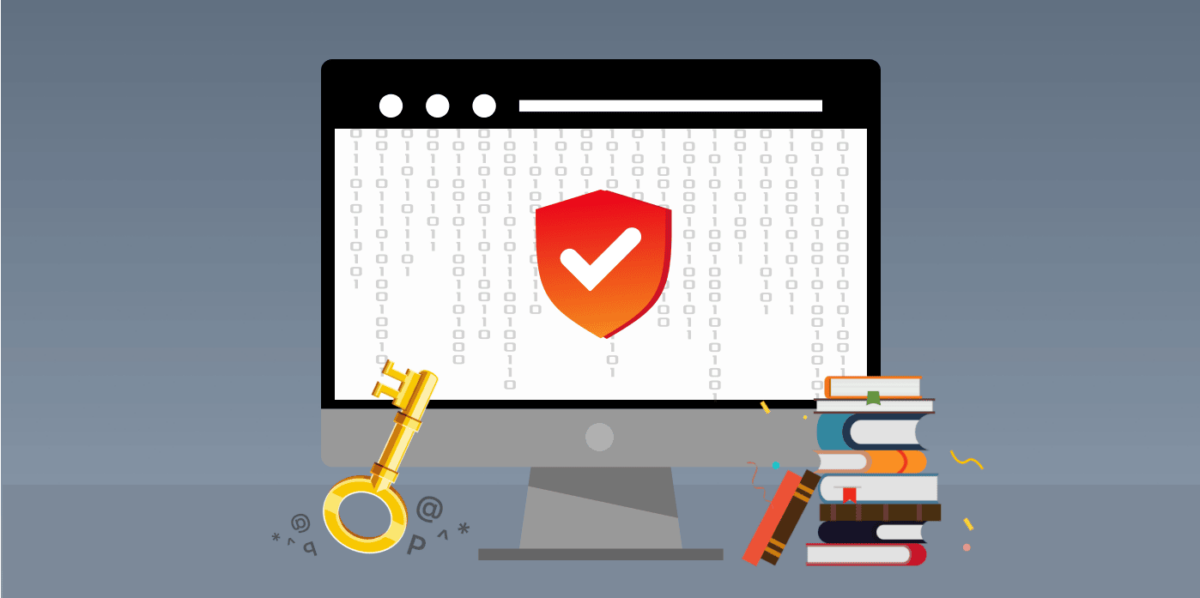Ever wished you could send a super secret note to your friend without anyone else snooping around? That’s where cryptography comes in—a secret language that keeps your messages safe from prying eyes.

Cryptography turns regular information into a secret code that looks weird to anyone who doesn’t know the secret to cracking it. It’s like using a secret decoder ring that changes plain words into a mysterious alphabet only you and your friend can understand. Keep reading to learn everything about cryptography, how it works, its types, and its pros and cons. Learn how this ancient art has evolved as a major cybersecurity practice.
What is Cryptography, and How it Works?
Cryptography is a method of securing and protecting information with codes so that only the recipient with whom you want to share the information can understand it.
The technique is popular and has been used for thousand of years. Even today, many businesses, including banks, e-commerce platforms, and education systems, use cryptography.

Imagine you have a message or a password you want to keep safe. Cryptography mixes it up using clever math, turning your message into ciphertext. This ciphertext is a jumbled mix of letters, numbers, and symbols that doesn’t mean anything to anyone who sees it—unless they have the special key to unlock it.
Cryptography has evolved with technological developments. Modern cryptography uses computer codes to safeguard information.
History of Cryptography

The word “cryptography” comes from a Greek word meaning “hidden.” It’s all about writing in secret. People have used cryptography for centuries, from ancient Egyptians with their hieroglyphics to Julius Caesar with his special cipher system that changed letters around. Even the Spartans had a gadget called a scytale for sending hidden messages in wars.
Nowadays, from government agencies to online shopping sites, cryptography is used everywhere to keep important information from leaking out. Governments sometimes get nosy and peek into cryptography to monitor secret messages that might affect their country.
What is Cryptography Used for?

While cryptography may sound like tech for spies and militaries, it actually plays a crucial role in safeguarding our digital lives. From its origins in encrypting wartime communications to today’s applications, crypto helps keep our data secure and private.
Think about every time you log into your email, shop online, or pay bills digitally. Cryptography works behind the scenes, verifying your identity and ensuring only the right eyes can access the sensitive information. It’s like an invisible security guard, making sure you get your mail and money while keeping prying eyes out.
Take online banking as an example. As you transfer funds or check balances, cryptographic encryption masks your account numbers, transaction amounts, and other financial details as they flow across the internet. This prevents hackers from intercepting and abusing that data.
Cryptocurrencies like Bitcoin also use cryptographic principles. The blockchain ledger system uses techniques like digital signatures and hash functions to enable secure, anonymous peer-to-peer transactions without relying on a central authority for verification.
Even when shopping online, e-commerce platforms depend on cryptography. It scrambles your payment info and purchase details, protecting that data while in transit, when stored, and deterring fraud attempts.
Types of Cryptography

Modern cryptography consists of several types, each with specific functions and applications. Let’s learn more about each type in detail.
1. Elliptic-curve Cryptography
Elliptic-curve cryptography (ECC) is an efficient and safe public encryption technique. It uses the elliptic curve theory to create a public key encryption model. Here, the properties of the elliptic curve generate cryptography keys.
It consists of a pair of keys: a public key and a private key. The owner keeps their private key safe to encrypt and decrypt data securely. ECC offers comparable security using smaller key sizes—an essential factor for optimization.
It is also popular in mobile, IoT, and edge computing for its strong public-key abilities with less computational power. Developers use it to secure identity and access management and HTTPS connections. They also use it for digital signatures and Internet of Things (IoT) applications.
2. Symmetric Key Cryptography
Symmetric key cryptography simplifies encryption by using a single key for all operations. Also known as private or secret key cryptography, It lets the sender and receiver use the same key for message encryption and decryption.
Symmetric key cryptography is fast and straightforward. However, securely exchanging the key between the sender and receiver is crucial.
Important symmetric key cryptography algorithms include:
- Data Encryption Standard (DES),
- Blowfish,
- Advanced Encryption Standard (AES), and
- Triple DES.
3. Asymmetric Key Cryptography
Asymmetric cryptography, also known as public key cryptography, is a clever way to securely exchange information without sharing secret keys beforehand. It uses two different but mathematically linked keys – a public key that encrypts the data and a private key that decrypts it.
The public key can be freely shared and distributed over the network. However, the private key must remain solely with the recipient to maintain security. This setup is safer than symmetric encryption, where the same key is used for encryption and decryption, requiring it to be shared between parties.
Here’s how it works: When you want to send encrypted data to someone, you use their public key to scramble the information. Once it arrives, only the recipient’s private key can unscramble and decrypt the data back to its original form. As long as the private key remains securely guarded, no one else can read the encrypted message, even if they intercept it during transmission.
The ingenious use of separate keys for encryption and decryption makes asymmetric cryptography ideal for secure data transmission and digital signatures across the Internet. Its security model is widely adopted for safeguarding online communications and transactions.
4. Hash Functions
Hash functions encode data using a distinct mathematical procedure. This process creates a unique string of characters corresponding to the data. Then, it hides the original information with meaningless codes.
Each message has a unique string or hash value, so even a slight change would produce a different value. Hash functions create a fixed-length output string, a digest, from any input data. It is unlikely to reverse-engineer the original input data from the hash value.
Hash functions do not use keys for encryption. They let users confirm their data integrity by generating unique communication fingerprints. Users can verify that the data is intact by comparing hashes. They are mainly used for password encryption and data integrity verification.
Why Cryptography Matters
In our digitally connected world, we constantly make important decisions online. From sharing personal data to making payments and interacting on social media, cryptography plays a crucial role in keeping this information safe and private as we use various digital platforms and services. Here’s how it does so:
- Confidentiality: Cryptography encrypts your online traffic, passwords, and sensitive data, making it extremely difficult for hackers to launch cyber attacks. It ensures your messages and activities remain confidential and shielded from prying third-party eyes.
- Integrity: With techniques like hashing and digital signatures, cryptography lets you check that the messages you get haven’t been messed with. It’s like having a seal on a letter that only breaks if someone opens it before you do.
- Authentication: Ever wondered if the person on the other end of your chat or email is really who they say they are? Cryptography uses digital signatures to give you the peace of mind that messages are coming from the right folks.
- Irreversibility: Once someone sends a message with a cryptographic signature, they can’t pretend they didn’t. It’s like writing in permanent marker; there’s no erasing it.
- Security advantage: At the end of the day, cryptography is all about giving you and everyone else a safer internet. It adds a tough layer of protection against sneaky hackers and keeps your digital world secure.
Cryptography’s Role in Cybersecurity
Cryptography is like a superhero in this digital world. When the information gets where it needs to go, the right key can decode it back to its original form. This superpower keeps our data safe, genuine, and private, making cryptography a big deal for strong cybersecurity.
Cryptography is used everywhere online to beef up security:
- Secure communication: Imagine your online chats getting a shield, making them invisible to anyone but the person you’re chatting with. That’s what encryption does, and it’s why many chat apps make sure only you and your friend can see your conversation.
- Digital signatures: Ever wonder how websites know it’s really you? They use special math tricks called hashing algorithms to check if your digital signature matches, like verifying your secret handshake.
- Password protection: Password managers use these same math tricks to jumble up your passwords into a secret code, keeping them safe from hackers.
- Blockchain security: Cryptography is the secret sauce that makes things like Bitcoin possible. It lets people securely move digital money around without needing a big bank to oversee things.
- Email safety: When you send an email, cryptography wraps it up in a digital envelope, keeping nosy people from peeking at your messages.
Cryptography and VPNs

Think of Virtual Private Networks (VPNs) as special secure channels that protect everything you do online. High-quality VPNs like ExtremeVPN use advanced secret codes or cryptographic techniques to make sure nobody can get their hands on your internet activities.
With a VPN working, your online moves are pretty much invisible, keeping you safe from anyone trying to watch you or steal important info. And as VPN tech gets better, they’re finding even smarter ways to use secret codes to keep your private life safe and secure from malicious identities.
Real-world Examples of Cryptography
Even if it sounds super techy, secret codes or cryptography are part of your online life every day, protecting your chats, your selfies, and even your secret diaries. Cryptography can take many shapes, using different secret code methods to keep all sorts of information safe. Let’s check out some everyday ways you see cryptography in action:
Hashing Encryption Protocols
Hashing and encryption are like the dynamic duo of the secret code world, working together to keep our digital stuff safe.
Here’s how they team up:
- Password protection: When you set a new password, most websites hash it using a one-way cryptographic function. This turns it into an indecipherable code stored in their databases – not the actual password. Then, when you log in, they hash your entry to check if it matches the stored code. Some sites add an extra layer by encrypting these hashed passwords to protect them further, even if their databases are breached.
- Secure file transfers: Sending a pic to a friend? First, your phone does a quick check (creates a digest) to make a unique mark on the file, then locks it up before sending it. When your buddy gets it, their phone unlocks it and checks to ensure the mark matches. This double-check makes sure your pic stays private and unchanged in its digital journey.
- End-to-end encrypted messaging: Some chat apps make a new secret key for every chat. But instead of just sending this key over, they lock it up with the receiver’s public secret code. The person getting it uses their secret code to open it and get the chat key. This way, only you and your friend can read what’s sent, keeping your gossip safe from eavesdroppers.
Creators can build strong defenses by mixing hashing and encryption. This keeps all our important digital things like passwords, pics, and chats safe, even if someone breaks into the digital vault.
Symmetric Encryption Protocols
Symmetric encryption is like a secret code that uses the same “key” to lock (encrypt) and unlock (decrypt) your messages. One of the most secure and popular secret codes for doing this is the Advanced Encryption Standard (AES).
AES is the gold standard for keeping VPN connections and website visits (HTTPS) safe. Its top-notch security makes sure that even if someone sneaky grabs your encrypted message, cracking it open without the key is basically impossible. This is why AES is super important for keeping our online conversations private.
There are other secret codes like DES, Blowfish, IDEA, and the Rivest Ciphers, each with their own special uses. For example, Blowfish can use really long keys for extra strong protection of files and documents. But DES got old and isn’t safe against today’s smart hackers, so AES took the lead as the go-to choice.
Then there’s 3DES (Triple DES), which locks your message not once but three times, making it hard for anyone trying to force their way in. It’s so great at protecting info that it’s still used to keep credit and debit card data safe, even as we move to fancier cards with chips.
Asymmetric Encryption Protocols
Asymmetric encryption, also known as public-key cryptography, changed the game by letting people send secret messages without needing to pass the key first. It uses a pair of keys: one public key that everyone can see, and one private key that’s kept a secret by the person receiving the message.
The RSA algorithm is a big deal in asymmetric encryption. It’s been around for a long time, proving its worth by keeping web browsing, emails, and file sharing secure. It works by ensuring that only the person with the right private key can open messages locked with their public key.
While RSA focuses on keeping messages private, the Digital Signature Algorithm (DSA) makes sure the message is legit and hasn’t been messed with, kind of like sealing a letter with a special stamp. DSA is crucial for stuff like blockchain.
As we go more and more online, having strong asymmetric encryption like RSA and DSA is essential for protecting our privacy and making sure our information stays safe. That’s why cryptographers are always working to make these secret codes even stronger against the latest threats.
Advantages of Cryptography

Cryptography acts as a guardian for our digital world, checking who can see or use certain information and blocking out anyone who shouldn’t be there. This is important for stopping online dangers like ransomware or someone trying to sneak into your data.
Because of cryptography, we can chat, shop, and bank online without worrying. It scrambles our messages and financial details so only the people we’re talking to or transacting with can understand them.
Moreover, cryptography is the secret sauce in privacy tools like VPNs, which make our web surfing invisible to outsiders. It also makes secure messaging apps safe, so no one else can listen in on our conversations from start to finish.
Disadvantages of Cryptography
Cryptography isn’t perfect. While it’s great at making our online lives more secure and private, there are some hurdles:
- In urgent situations, getting to the encrypted data quickly can be tough if we’re not on top of managing the keys.
- Cryptography can check if someone is who they claim to be but can’t tell us what they plan to do with the data.
- It can’t fix security systems that were set up poorly from the get-go; it needs to be part of a bigger security plan.
- Really strong encryption can slow things down because it takes a lot of computer power to mix up and then make sense of the data again.
- Big jumps forward in math or technology could make the encryption methods we use now outdated.
- Setting up solid encryption and security takes a lot of money and hard work.
While cryptography is key to keeping our digital doings safe, it’s not a fix-all. Its success relies on smart setup and being part of an overall security plan, so it’s crucial to think about how it fits with what you need to protect.
How to Minimize Cryptography Risks
To protect the keys that lock our digital secrets from theft or misuse, it’s wise to rely on special systems designed for managing such keys.
Proper key management means a lower risk of them ending up in the wrong hands. Think of using a super secure vault, a Hardware Security Module (HSM), for creating, storing, and looking after these keys—like a high-tech fortress for your digital valuables.
A strong key management system should include:
- Strict security checks: Ensure only authorized people can access the keys, with detailed logs of who accessed them and when.
- Organized procedures: Have clear guidelines and approval processes for key use.
- Quick response to alarms: Be ready to act fast if a key starts to compromise to keep everything secure.
- Careful handling of keys: From making new keys to safely destroying old ones, every step should be secure and reliable.
Sticking to these smart practices keeps your keys, and therefore your data, safe. It also makes sure you’re following the rules for data protection, smoothing out the process, and keeping your digital defenses strong.
There’s also something new on the horizon called quantum cryptography. It uses the principles of quantum physics to create codes that are super tough to crack. When you mix this with the usual encryption methods, you get an even stronger shield against hackers. This is like having an invisible, unbreakable lock that keeps getting better as technology advances, offering top-notch protection as security threats grow and change.
What are Cryptographic Key Attacks, and What are their Types?

Cryptographic keys are important for keeping our data safe by turning it into secret code. But if these keys aren’t kept safe, they can become a weak spot where hackers can sneak in. The good news is that the experts are always finding new ways to make these keys tougher for hackers to mess with.
As more places use cryptography to keep chats and data safe, it’s really important to manage these keys correctly. Here’s what to watch out for to keep keys safe:
Inadequate Key Protection
Major cyber attacks like Heartbleed show that if keys are left out in the open, even on a server, hackers can grab them. It’s best to keep keys locked up tight and only use them in very secure places.
Insecure Key Storage
Storing keys right next to the data they’re supposed to protect is like locking a door and leaving the key in the lock. If a hacker gets in, they can grab the key and unlock everything. Keep keys in their own secure spot.
Vulnerable Key Transfers
When moving keys between systems, you must encrypt them with a shared transport key that should be later discarded. If you have to split the key into separate segments before the transfer, make sure to re-combine and then destroy the segments after reaching the destination. Proper key handling prevents interception.
Weak Key Generation
Encryption keys are essentially large random numbers – the longer and more unpredictable they are, the harder they are to crack. Key strength and length should match the sensitivity of the data being protected. Use certified randomization hardware and algorithms to generate truly strong keys.
Key Misuse and Mishandling
Improperly encoding keys into software systems, using keys in unintended ways, or failing to adhere to proven cryptographic standards dramatically increases the risk of a successful attack bypassing encryption defenses.
Lack of Audit Logging
Not tracking who uses the keys and when can make it hard to figure out if something goes wrong. It’s like not having cameras in a store to catch shoplifters.
No Key Backup Provisions
If a key is corrupted or lost with no backup, it may permanently lock out access to the encrypted data. Establish secure key backup and recovery processes to avoid catastrophic data loss scenarios.
Key Overuse and Stagnation
Continuously using the same key to encrypt more and more data can crack the key over time through cryptanalysis. Implement key rotation policies to regularly cycle in new keys while retiring older ones.
Repetition of Keys
Each key should have a dedicated, limited purpose for either encrypting or decrypting specific data. Using the same key for multiple roles opens up wider attack surfaces.
Manual Key Management
Human mistakes are inevitable when key management procedures rely on manual editing of files, spreadsheets, or paper records. Robust key management systems with proper access controls, approval workflows, and automation are essential.
Potential Insider Threats
Sometimes, the danger comes from people inside the organization who can access the keys. It’s important to keep a close eye on who can do what with the keys.
Conclusion
Cryptography is an important tool for protecting important information in today’s world. Many businesses use this method to protect the privacy of their customers, employees, and stakeholders. While it offers many advantages, it has several risks and disadvantages. Hence, important to take precautions.
VPNs show how powerful cryptography can be. When you connect to a VPN, everything you do on the internet becomes secure. ExtremeVPN hides your IP address and uses AES 256-bit encryption to protect your data. This means nobody can spy or steal your data on the Internet.

